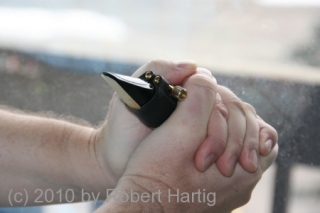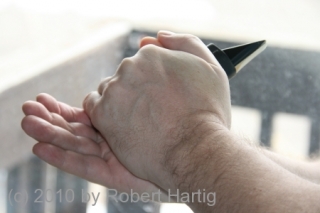Last Monday I got together with Ric Troll (guitar), Dave DeVos (bass), and Randy Marsh (drums), and we rehearsed a few of Ric’s original tunes in his studio, Tallmadge Mill. These guys are wonderful jazz musicians, and Ric is a composer of long standing. His music can be chewy stuff to work through, but this last session the tunes started to gel and we got some pretty nice grooves going.
Ric recorded the whole session, so I’m able to share some sample tracks with you. What you’ll hear are the tunes in rough, but there’s some very nice playing going on.
The New Hip is a basic 12-bar blues, but Ric’s head suggests a soloing approach different from your standard bebop. Attempting to free myself from cliches, I incorporated a more angular style.
The Urge is a fun tune with a high-energy A section and a swinging, cooler-sounding bridge that offers a lovely contrast.
Orcs has been the most challenging number, with it’s polymetric approach and shift to 7/4. It is coming together, though, and will be one heck of a tune once we’ve nailed down the form and the feel. Listen to Randy–the guy just tears it up on the set! Here’s a second take for all you double-dippers.
If you like what you hear, check out my Jazz Page for more sound samples as well as solo transcriptions, articles, and exercises of interest to improvising musicians.



